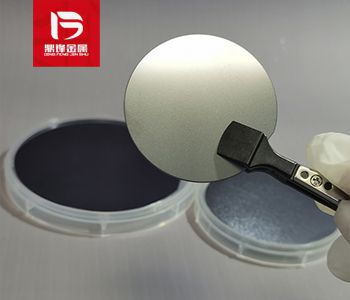
Indium Phosphide Recycling
Indium phosphide (InP) is a compound semiconductor material composed of the elements indium and phosphorus with excellent electronic and optical properties. Waste indium phosphide is one of the recycling sources of indium-containing waste. Other recycling sources of indium-containing waste include indium wire recycling, indium powder recycling, indium sheet recycling, indium ingot recycling, indium particle recycling, crude indium recycling, and refined indium recycling.
- Parameter
- Related Questions and Answers
-
Name : Indium phosphide
-
Use : Semiconductor Materials
-
Application Areas : Semiconductor field
-
Appearance and properties : solid
-
Settlement Method : On-site payment
-
Recycling Type : Indium recycling
-
Door-to-door recycling:worldwide
-
Customer service: Free content testing and door-to-door recycling
Indium Target Recycling
Indium target refers to the target material used in thin film deposition technology, usually high purity indium metal or indium alloy. Recycling of waste ITO targets is one of the rare precious metal target recycling. Rare precious metal target recycling also includes silver target recycling, ruthenium target recycling, platinum target recycling, gold target recycling, iridium target recycling, germanium target recycling, tantalum target recycling, etc.
Search : Indium Target RecyclingCrude Indium Recycling
Crude indium and refined indium are two forms of indium metal that differ in purity during the refining process. Refined indium is high-purity indium metal that has undergone multiple refining processes. Its purity is usually above 99.99% and contains very little other metal impurities. Both are recycling sources for indium waste. Other recycling sources for indium waste include indium mud recycling, indium slag recycling, indium sheet recycling, indium particle recycling, indium wire recycling, and indium ingot recycling.
Search : Crude Indium RecyclingIndium Phosphide Recycling
Indium phosphide (InP) is a compound semiconductor material composed of the elements indium and phosphorus with excellent electronic and optical properties. Waste indium phosphide is one of the recycling sources of indium-containing waste. Other recycling sources of indium-containing waste include indium wire recycling, indium powder recycling, indium sheet recycling, indium ingot recycling, indium particle recycling, crude indium recycling, and refined indium recycling.
Search : Indium Phosphide RecyclingIndium Nitrate Recycling
Indium nitrate (In(NO₃)₃) is an inorganic compound formed by the reaction of indium with nitric acid, usually in the form of white crystals or a colorless solution. Waste indium nitrate is one of the raw materials for recycling indium-containing precious metal catalysts. Other raw materials for recycling indium-containing precious metal catalysts include indium sulfide recycling, indium hydroxide recycling, indium fluoride recycling, indium acetate recycling, and indium chloride recycling.
Search : Indium Nitrate RecyclingProduct Details
Indium phosphide (InP) is a compound semiconductor material composed of the elements indium and phosphorus with excellent electronic and optical properties. It is one of the third generation semiconductor materials and is widely used in optoelectronics and high frequency electronics. Indium phosphide has a small band gap, making it suitable for applications such as infrared photodetectors, laser diodes, and fiber optic communications, especially optical devices in the long wavelength range.
There are several main methods to produce indium phosphide (InP):
1. Vapor Phase Epitaxy (VPE, Vapor Phase Doping Epitaxy): Vapor phase epitaxy is one of the most commonly used methods to produce indium phosphide. In this process, gaseous precursors of indium and phosphorus (such as trimethylindium and phosphine) react at high temperatures to form a single crystal thin film of indium phosphide. This method can precisely control the thickness and doping concentration of the film and is widely used in the fabrication of indium phosphide optoelectronic devices such as lasers and photodetectors.
2. Metalorganic Chemical Vapor Deposition (MOCVD): The MOCVD method deposits thin films of indium phosphide by introducing organometallic compounds containing indium and phosphorus (such as trimethylindium and phosphine) into a reaction chamber and reacting them with hydrogen at high temperatures. This method can efficiently and uniformly grow indium phosphide thin films, and is particularly suitable for the fabrication of integrated optoelectronic and photovoltaic devices. MOCVD can precisely control the doping and film thickness of the material and is an important fabrication technique in modern optoelectronic and communication devices.
3. Molecular Beam Epitaxy (MBE): Molecular beam epitaxy is a method of forming thin films of indium phosphide by depositing molecular beams of indium and phosphorus directly onto a substrate in a high vacuum environment. This method allows the thickness and doping level of the film to be controlled with very high precision, making it ideal for preparing high-quality indium phosphide single crystal materials that are often used in research and high-end device production.
4. Dissolution method: The dissolution method is a method in which an indium source (such as an indium salt) and a phosphorus source (such as phosphoric acid or phosphine) are dissolved in a solution and indium phosphide is produced by a chemical reaction. This method can be performed at low temperatures and is suitable for the production of small-scale or low-cost indium phosphide films, but the purity is usually low and it is suitable for some simple applications. High-temperature solid-state method: 5. The high-temperature solid-state method produces indium phosphide by mixing an indium source and a phosphorus source and reacting them at high temperatures. This method is relatively simple and can produce larger quantities of indium phosphide, but the purity and crystal structure are relatively difficult to control.
Waste indium phosphide is one of the recycling sources of indium-containing waste. Other recycling sources of indium-containing waste include indium wire recycling, indium powder recycling, indium sheet recycling, indium ingot recycling, indium particle recycling, crude indium recycling, refined indium recycling, etc. If you need to recycle indium-containing waste, please call our 24-hour service hotline. Ding Feng precious metal recycling and refining manufacturer has its own recycling and refining plant without the need for middlemen to get the price difference, and has a professional technical team and customer service personnel to provide one-to-one service and ensure customer privacy during the recycling process.

